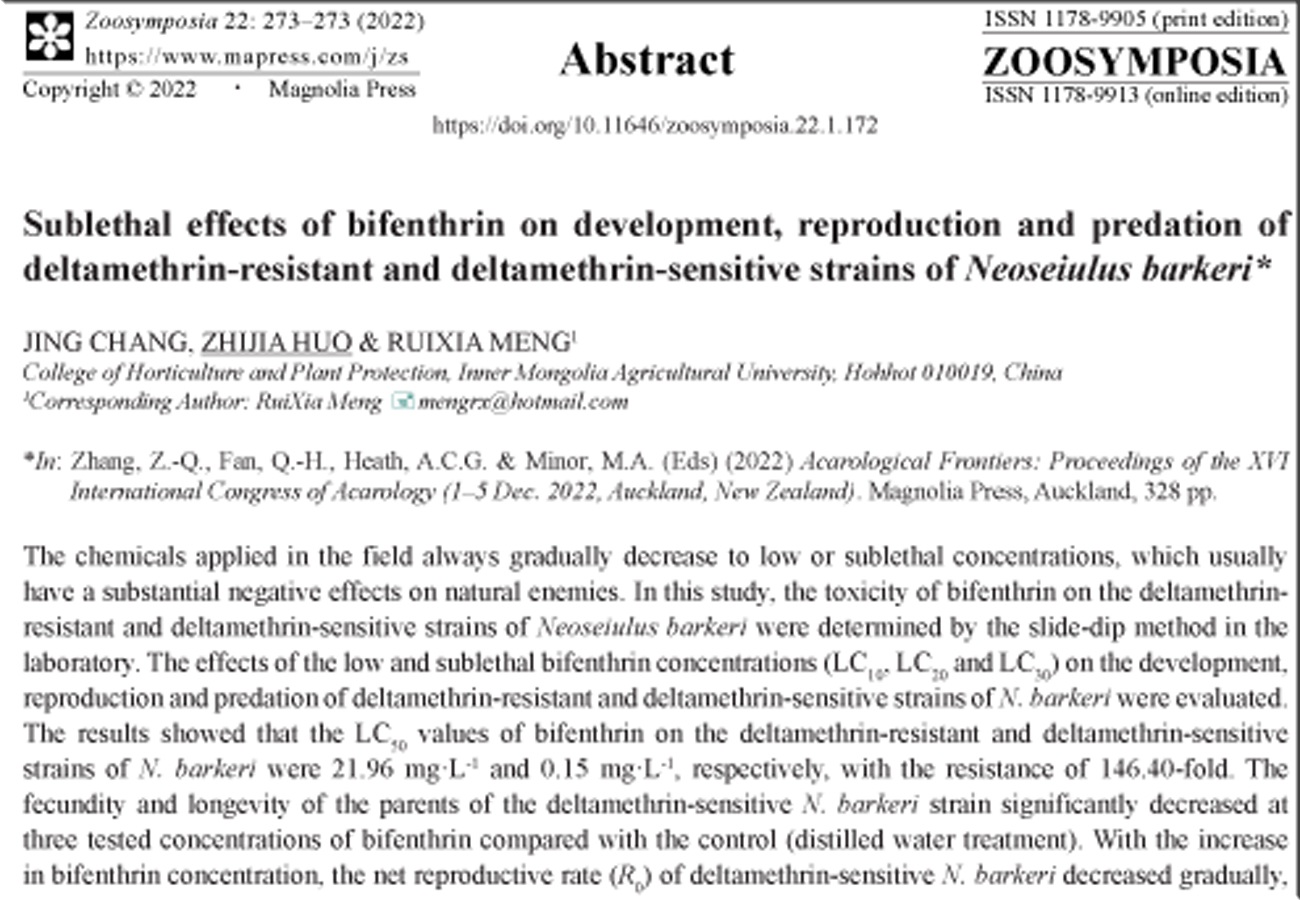Abstract
The chemicals applied in the field always gradually decrease to low or sublethal concentrations, which usually have a substantial negative effects on natural enemies. In this study, the toxicity of bifenthrin on the deltamethrin-resistant and deltamethrin-sensitive strains of Neoseiulus barkeri were determined by the slide-dip method in the laboratory. The effects of the low and sublethal bifenthrin concentrations (LC10, LC20 and LC30) on the development, reproduction and predation of deltamethrin-resistant and deltamethrin-sensitive strains of N. barkeri were evaluated. The results showed that the LC50 values of bifenthrin on the deltamethrin-resistant and deltamethrin-sensitive strains of N. barkeri were 21.96 mg·L-1 and 0.15 mg·L-1, respectively, with the resistance of 146.40-fold. The fecundity and longevity of the parents of the deltamethrin-sensitive N. barkeri strain significantly decreased at three tested concentrations of bifenthrin compared with the control (distilled water treatment). With the increase in bifenthrin concentration, the net reproductive rate (R0) of deltamethrin-sensitive N. barkeri decreased gradually, while the juvenile duration and generation period of offspring (F1 generation) were prolonged. However, there was no significant effect of bifenthrin concentrations on the growth, development and reproduction of deltamethrin-resistant N. barkeri strain. After pretreatment with sublethal doses of bifenthrin, the functional response models of deltamethrin-resistant and deltamethrin-sensitive strains of N. barkeri on Tetranychus urticae were still Holling’s type II curves, whereas there were differences for the parameters of the models. Compared to the control, the attack rates of the deltamethrin-resistant and deltamethrin-sensitive strains of N. barkeri at LC20 and LC30 concentrations of bifenthrin were reduced by 2.01% and 2.12%, and 27.69% and 32.98%, respectively; and the handling time of the sensitive strain was prolonged by 16.22% and 54.37%, respectively. Thus, low and sublethal concentrations of bifenthrin significantly reduced the predation rates of the sensitive strain of N. barkeri, but not for the resistant strain of N. barkeri. It is concluded that bifenthrin can be used in combination with a deltamethrin-resistant strain of N. barkeri to control T. urticae in the field.
References
-

